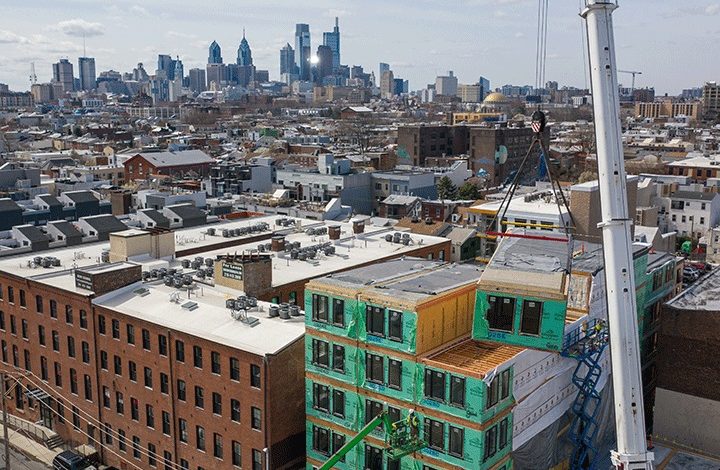 Architecture in general and the construction sector in particular, is undergoing a profound, almost revolutionary process of renovation and reorientation. Traditional construction, mainly of independent houses, although in many cases also of high-rise buildings, is passing from the plot to the industrial warehouse. Bricks are giving way to new materials and customary practices to innovation. What was once done in a unique and personalized way, is passing to serial production, in which each stage is planned and calculated. And yet, new construction still maintains a wide capacity for individuation, to build according to the wishes and possibilities of the end-user. It is the modular and prefabricated construction of buildings.
Architecture in general and the construction sector in particular, is undergoing a profound, almost revolutionary process of renovation and reorientation. Traditional construction, mainly of independent houses, although in many cases also of high-rise buildings, is passing from the plot to the industrial warehouse. Bricks are giving way to new materials and customary practices to innovation. What was once done in a unique and personalized way, is passing to serial production, in which each stage is planned and calculated. And yet, new construction still maintains a wide capacity for individuation, to build according to the wishes and possibilities of the end-user. It is the modular and prefabricated construction of buildings.
This transformation of the productive system of construction takes place for multiple reasons, all related to the advantages offered by the new method over the conventional one. Thus, classic construction is conditioned by issues such as the weather, the coordination of operators and involves long execution times. With new methodology, construction time is reduced between a quarter and a third, since it is carried out under controlled and optimized production conditions. This simple fact means a cost reduction of around 35%, not only in labour, but also in energy. In addition, it considerably reduces the environmental impact of the process, with less waste materials, water pollution and noise. With more efficient designs, the use of new materials and the incorporation of new technologies, the house or building’s bioclimatic and energy behaviour is substantially improved.
The fact that the buildings are built in an industrial warehouse, transported to the terrain and assembled there in record time, does not detract from the quality. Furthermore, the builders have already ensured that they comply with all existing regulations. In any case, it is convenient to carry out the appropriate legal checks, when the manufacturer operates from a country other than that of the end-user. It is also necessary to consider the climatic conditions of the final destination of the building, so ensure they suit.
There are a myriad of companies dedicated to the prefabricated modular construction of homes and buildings, which in turn offer a wide variety of models and solutions, both in design, materials and systems. The penetration of this way of production in the construction sector varies from one country to the next. According to Forbes magazine, although it counts for around 3% of the market in the United States, in European countries it is much higher: in Germany it represents 30%, in Austria 35% and in Sweden more than 80% of the market.
A key factor in the rise of prefabricated modular construction in Europe, is the community requirement that all new buildings fall under the category of ‘net zero energy’. According to a study that Forbes cites, some of the buildings manufactured following these new techniques can reduce their energy consumption by 90%, compared to those of traditional construction.
———-
Sources: Ecoinventos, Decoblog, Forbes, Passive House.
RELATED STORIES
Newsletter



